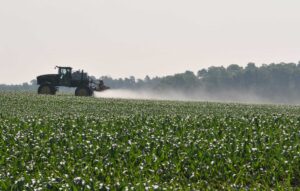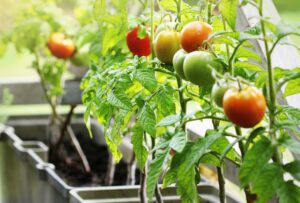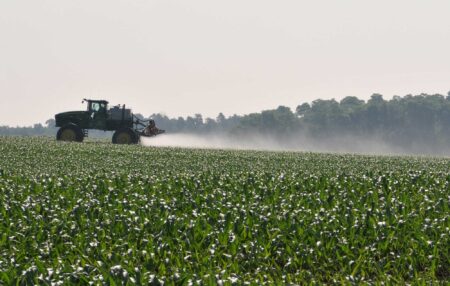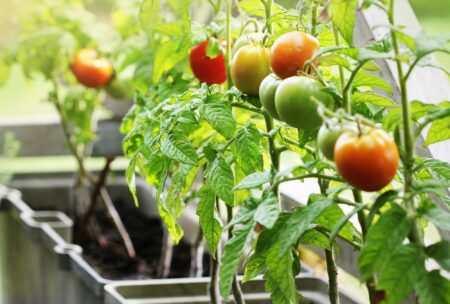While traveling in Nebraska on Monday, USDA Secretary Brooke Rollins kicked off the “Make Agriculture Great Again” and the first policy pillar of the agenda focuses on small family farms, “which are the heart of our communities and our nation,” say policy documents.
The op-ed column published below highlights challenges faced by small family farms and briefly describes solutions that USDA will pursue. The department shared a more detailed policy plan to put small family farms first in a 14-page Farmers First document provided to Successful Farming on Monday.
“The defense of the family farm is a defense of everything America has been – and everything we will be. It is my privilege to come to their defense,” wrote Rollins at the beginning of the document.
According to a 2024 USDA Economic Research Service report, about 86% of all farms were small family farms. By USDA’s definition, “small” farms have an annual gross cash farm income less than $350,000. USDA defines a family farm as a farm in which the majority of the business is owned by an operator and/or any individual related by blood, marriage, or adoption, including relatives who do not live in the operator’s household.
Note, USDA is currently reviewing farm size definitions to ensure they adequately reflect modern-day realities while also helping to ensure that the extensive resources that USDA makes available are appropriately tailored to the needs (and size) of farms, Farmers First documentation said.
Here is a synopsis of the elements of the announcement.
Challenge: Reliable Access to Capital
“Many small farms lack reliable access to capital,” Rollins said. Lack of collateral, limited credit history, and the pressures of the current farm economy can amplify this issue.
USDA Solution: “We are reforming the Farm Service Agency (FSA) loan program to streamline delivery and increase program efficiency,” Rollins wrote.
Farmers First policy documents explain USDA is evaluating new shared services platforms for the FSA loan program and Rural Development programs. This effort aims to make existing USDA programs such as loans and loan guarantees available to small farmers more usable and accessible.
Challenge: Acquisition of Land
“The acquisition of land for new farmers has also become increasingly difficult amid high costs and real estate development,” said Rollins. The Farmers First documentation specifically points to solar development on productive farmland as adding to this challenge.
USDA Solution: USDA outlined plans for financial tools, federal land reform, and disincentivizing solar development on agriculture land to help ease this challenge.
Financial Tools
The department’s existing FSA Farm Ownership Loans offer up to 100% financing and can be used to help small farmers and ranchers purchase, improve, and expand current operations. The existing Guaranteed Farm Loan Program from FSA helps farmers and ranchers get loans from USDA-approved commercial lenders at reasonable terms to buy farmland or finance agricultural production.
The Agricultural Land Easement (ALE) program can be used to protect against development pressures and rising tax burdens, says the USDA. This program is a component of the Agricultural Conservation Easement Program (ACEP) administered by NRCS. The program provides financial assistance to eligible partners for purchasing Agricultural Land Easements that protect the agricultural use and conservation values of eligible land.
Federal Land Use
Additionally, USDA manages millions of acres of federal land. The U.S. Forest Service manages that land and issues various grazing permits to ranchers. These include Term Grazing Permits, Temporary Grazing Permits, and Livestock Use Permits. The department is expanding the permitting of unused or underused federal land for long-term leases to small farms, said Rollins.
“To enhance flexibilities and ensure working lands stay working, the U.S. Forest Service is reforming the National Environmental Policy Act and pursuing additional flexibilities for permittees and leases, especially for farmers, ranchers, and adjacent landowners,” explained policy documents.
Disincentivizing Solar
As part of the Farmers First policy initiative, USDA is using prioritization points and regulatory action to disincentivize the use of federal funding for solar panels to be used on productive farmland. “Farmland should be for agricultural production, not solar production. We call on state and local governments to work alongside USDA on local solutions,” the department said.
On May 7, National Association of State Departments of Agriculture (NASDA) President Wes Ward and Secretary Rollins signed a memorandum of understanding to “improve collaboration, coordination, and to ensure partnership with our friends in our agriculture community on the front lines,” said a USDA press release.
Challenge: Access to Infrastructure
“We are also aware that many new farmers lack access to infrastructure such as cold storage and processing facilities,” said Rollins. This can make it difficult to establish and maintain markets, particularly for lower-volume producers.
USDA Solution: Existing federal programs such as the Farm Storage and Facility Loan (FSFL) program and the Local Agriculture Market Program (LAMP) provide grants and resources aimed at improving infrastructure and market access for small producers.
USDA’s rural development mission area has grant and loan opportunities such as the Rural Energy for America Program (REAP) and the Value-Added Producer Grant (VAPG).
The department recently overhauled the Partnerships for Climate Smart Commodities renaming it the Advancing Markets for Producers (AMP) initiative. A minimum of 65% of federal funds awarded in AMP projects must go to farmers.
Additionally, “…we are working to provide state-level grants for infrastructure tied to the needs of new farmers,” Rollins said.
“The state-level grant funding Secretary Rollins outlined would be a tremendous tool in helping new Virginia farmers obtain land, vital resources, like cold storage, and strengthening industry-related infrastructure,” said Virginia Secretary of Agriculture Matt Lohr after traveling to Washington D.C. for a Farmer First roundtable with Rollins, the Board of Directors of NASDA, and more than 20 farmers and ranchers at the beginning of May.
In his home state, “We continue to be strategic in awarding grants through the Agriculture and Forestry Industries Development (AFID) program, which are specifically designed to help build local food and farming infrastructure and incentivize agriculture and forestry value-added or processing projects. In fact, an AFID Infrastructure application period recently closed on April 30, and we expect to have award announcements on selected projects this summer,” Lohr said.
USDA also said it will work to improve and strengthen the state and federal food inspection agreements to expand access to processing capacity.
Finally, USDA said it will prioritize local farmers in institutional and public food procurement policies. It will also work to educate small farmers on such policies with an emphasis on USDA nutrition programs such as Section 32, The Emergency Food Assistance Program, SNAP Healthy Incentives, Senior Farmers’ Market Nutrition Program, WIC Farmers’ Market Nutrition Program, and the Patrick Leahy Farm to School Program.
Challenge: Digitizing Applications
Small family farms have little to no support staff to fill out paperwork required to participate in USDA programs. The process is often complex and time consuming.
USDA Solution: Rollins wrote that applications for every farmer-focused program will be available for electronic submission by the end of 2025.
Recently the Emergency Commodity Assistance Program (ECAP) utilized pre-filled applications. The department says it is paying farmers for economic losses within an average of three days of applications — examples of cutting red tape and streamlining delivery, USDA said.
USDA
Rollins Op-Ed: “Small Family Farms Lead the American Way of Life”
Under the leadership of President Trump, we are removing obstacles for small farms across the country.
By Brooke L. Rollins, U.S. Secretary of Agriculture
Small family farms are the backbone of our nation. Throughout our history, they have secured the promise of liberty made by our founders, and they are the indispensable foundation of democratic civics and republican virtues. As Thomas Jefferson wrote to James Madison in 1785, “small landholders are the most precious part of a state.”
Today, with my friend Governor Jim Pillen, we kicked off the Make Agriculture Great Again Initiative at Ohnoutka Family Farm in eastern Nebraska. This new policy initiative at USDA will address a series of issues within food, agriculture, and rural America but will specifically focus on challenges faced by small family farms.
We know these challenges, such as labor costs and availability, are not easy ones to address. But we are committed to focusing on the needs of Americans who operate small farms because of their patriotism and commitment to their land.
During my time as secretary of Agriculture, I’ve met with family farmers who have faced too many obstacles as they work to maintain or start new operations.
For example, many small farms lack reliable access to capital. At USDA, we are reforming the Farm Service Agency loan program to streamline delivery and increase program efficiency.
The acquisition of land for new farmers has also become increasingly difficult amid high costs and real estate development. That’s why we’re using prioritization points and regulatory action to disincentivize the use of federal funding for solar panels to be used on productive farmland. And we’re expanding permitting of unused or underused federal land for long-term leases to small farms and streamlining the federal land leasing process so the program works better for farmers and adjacent landowners.
We are also aware many new farmers lack access to infrastructure such as cold storage and processing facilities. To address this disparity, we are working to provide state-level grants for infrastructure tied to the needs of new farmers. And by the end of the year, we will ensure applications for every farmer-focused program are available for electronic submission.
And finally, we are working with governors and state legislators around the country to find solutions to the challenges small farms face. We recently signed a memorandum of understanding with the National Association of State Departments of Agriculture to find areas of collaboration between USDA and the states, which are the laboratories of democracy.
Earlier this month, we hosted a roundtable at USDA’s headquarters in Washington, D.C., with small-farm operators from around the country. We had the privilege of welcoming hog farmers from Ohio, third-generation local producers from Virginia, first-generation dairy farmers from Mississippi, Amish and Mennonite farmers from Pennsylvania, and many others who have devoted much of their lives to the land and their customers.
The founders did not chart the path of our nation so USDA bureaucrats in Washington can look over the shoulders of law-abiding American citizens.
As I was reminded by the witness of those who visited USDA, the Department of Agriculture was founded so every farming mother and father can raise their children, work their land, and spend time with their families and their God.
This is the mission of USDA, and now, under the leadership of President Trump, is the time to return to the fundamental work that will restore rural prosperity in forgotten communities across the nation.
Based on feedback from the hundreds of small family farmers I have met and talked to over the last 90 days, USDA is now making tangible changes to our policies to ensure family farmers can continue to work their land and new farmers can take on this way of life without obstruction.
While USDA has many programs to assist farmers, we know it takes government entities, non-profits, and the private sector focusing their efforts together to improve the viability and longevity of small family farms.
We were honored to announce this new policy initiative in Nebraska today. The existence and work of small farms are too central to our nation’s history, cultural heritage, and food supply to allow them to slowly disappear from our landscape. To steer clear of a problem that every American wants to avoid, it is imperative that federal and state governments provide proactive intervention so these small operations can preserve their inheritance for generations to come.







:max_bytes(150000):strip_icc()/54504517243_fa78c21a0e_6k-6fd42554d4a647e097385b7c2e2c8451.jpg)



:max_bytes(150000):strip_icc()/Ship-docked-at-Port-Houston-1741d74fc460476881a4754e9ad43f42.jpg)
:max_bytes(150000):strip_icc()/54163679242_59f748f514_oSAFethanolplant-Iowa-d55130af73f44d9cb58b780fbdef60f2.jpg)
